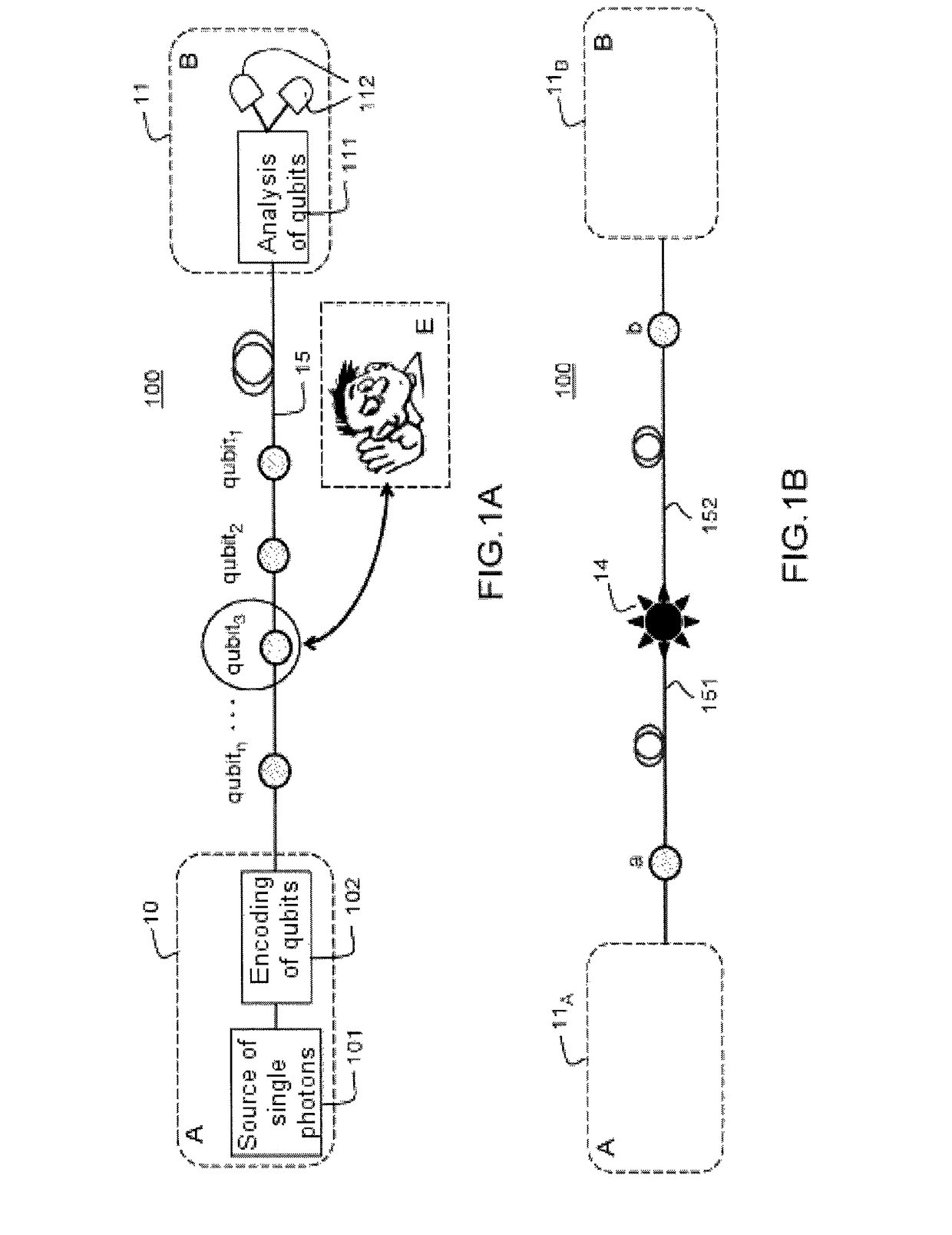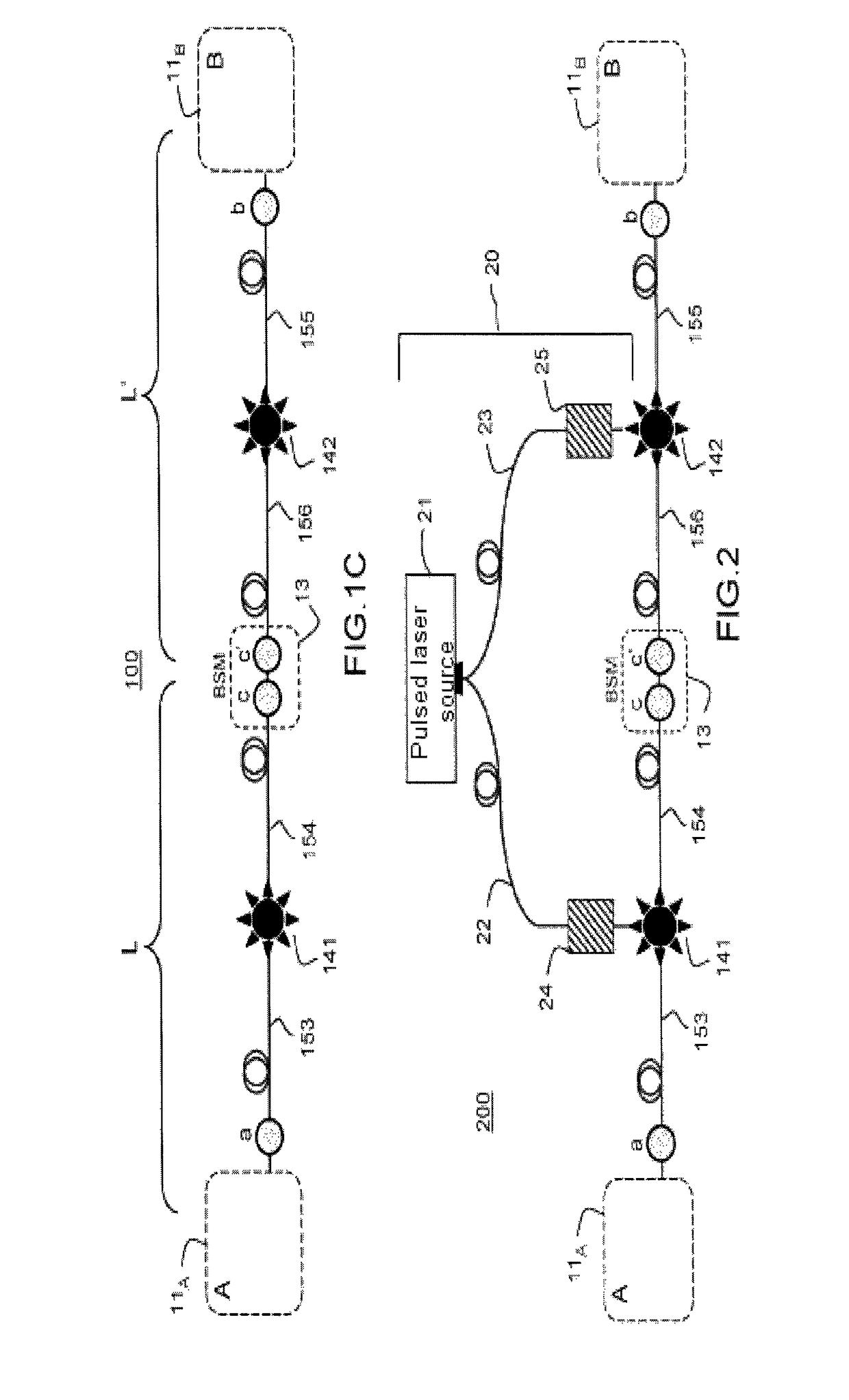Method and device for synchronizing entanglement sources for a quantum communication network
a quantum communication network and entanglement source technology, applied in the direction of digital transmission, securing communication, transmission, etc., can solve the problem of limiting the propagation loss of clock pulses to a limit beyond which communication is no longer possible, the final rate of establishment of secret keys is very low, and the optimization of hardware used is considerable. , to achieve the effect of limiting the propagation loss of clock pulses
- Summary
- Abstract
- Description
- Claims
- Application Information
AI Technical Summary
Benefits of technology
Problems solved by technology
Method used
Image
Examples
Embodiment Construction
[0028]FIG. 2 describes an exemplary embodiment of a quantum communication network 200 according to the invention between two users Alice and Bob situated at the places A and B. The quantum communication network is, like the network 100 represented in FIG. 1C, a network based on quantum relays. It comprises a plurality of optically pumped entanglement sources 141, 142 and of relay stations 13 disposed between the sources and allowing entanglement teleportation between the users. The generation of the pairs of entangled photons in the entanglement sources is for example obtained by pumping a nonlinear optical component, for example by means of a process of 4-wave mixing by 3rd-order nonlinear effect (χ(3)) in a nonlinear fiber or by spontaneous parametric conversion by 2nd-order nonlinear effect (χ(2)) in a nonlinear crystal, otherwise called SPDC according to the abbreviation standing for the expression “spontaneous parametric down conversion”. In this example, only two entanglement ...
PUM
 Login to View More
Login to View More Abstract
Description
Claims
Application Information
 Login to View More
Login to View More - R&D
- Intellectual Property
- Life Sciences
- Materials
- Tech Scout
- Unparalleled Data Quality
- Higher Quality Content
- 60% Fewer Hallucinations
Browse by: Latest US Patents, China's latest patents, Technical Efficacy Thesaurus, Application Domain, Technology Topic, Popular Technical Reports.
© 2025 PatSnap. All rights reserved.Legal|Privacy policy|Modern Slavery Act Transparency Statement|Sitemap|About US| Contact US: help@patsnap.com



